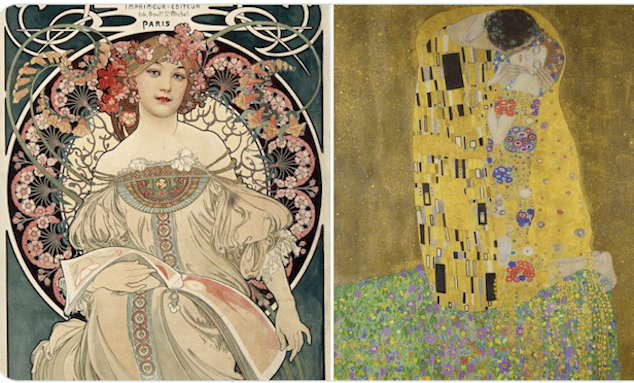
How natural motifs influenced Art Nouveau design, architecture and paintings and became a dominant influence with modern artists.
An exotic, opulent, and fundamentally modern break 19th-century historic tradition was Art Nouveau. Artists deliberately set out to revolutionize art and come up with something new, therefore Art Nouveau, by eschewing the worn-out and outmoded historicism coupled with traditional design and architecture.
In this article, we are going to have a more detailed look at this Modernism style. Let’s get started!
Do you find your inspiration in plants?
We know many artists from the Renaissance to the modern age who became famous for their pictures of nature. And Art Nouveau artists are not an exception. If you also find inspiration while looking at various plants and flowers, we can recommend an excellent app for you. It is basically a plant identifier where you can take a picture of a plant you liked and learn more about it. The Lily plant identification app is an excellent choice not only for artists and also for average users who want to dive deeper into the whole planting thing. All you need to know is to upload or add a plant picture of Lily plant app and voila, everything is ready. The app is loved by users not only in the US but the whole world.
Why did Art Nouveau become so popular?
The successful dismantling of artistic hierarchy is evidenced by the widespread popularity of Art Nouveau around the world. The movement, which replaced the neoclassical style that had dominated art, allowed artists all over the world to improve the design of everyday products and settings, enhancing the life of the general population.
Public and private realms joint ownership of a style because Art Nouveau was so common in public spaces like railway stations, tea cafes, and shops. Once more, this demonstrates how Art Nouveau is a type of art that anybody can appreciate. It is unified and open. Up to the First World War, the movement remained active and well-liked before losing momentum.

The emergence of Art Nouveau
The Art Nouveau movement thrived across the United States and Europe, not only in a single location or era. Art Nouveau wove Fine and Applied Arts together just to produce “complete works of art,” from architecture and design to book covers, as a uniting and comprehensive approach to art.
The word was significantly expanded thanks in part to the French gallery Maison de L’Art Nouveau, which is owned by a significant art dealer. However, the eponymous fashion did go by several different names.
In parallel, the Austrian Secession movement started to stir things up in Vienna. The Central European conservative artistic elite was rejected by the secessionists. A new, gloomy aesthetic with flat ornamental patterns, contrasts, and restrained, plunging lines was developed by Viennese avant-gardists.
This blend of different styles aimed to modernize the design and give it a completely new feel.
The main ideas of Art Nouveau
One of the key driving forces behind Art Nouveau and the one that determines the modernism of the style was the aim to reject the dominating styles of the 19th century. Industrialization was prevalent, and badly manufactured imitations of past eras dominated works of art. The goal of Art Nouveau was to revitalize quality craftsmanship, elevate the craft, and create contemporary designs that highlighted the practicality of the objects they were producing.
Many Art Nouveau designers believed that prior design had been overly ornamental, thus they developed the idea that an object’s function should determine its shape in order to prevent unnecessary ornamentation. This was a fluid mindset in practice, but it would have a significant influence on following modernist movements.
The prevalent idea that media like painting and sculpting were better than crafts like interior designing and metal work was supported by the education system, which ruled art instruction out from the seventeenth to the nineteenth century. Many people concluded that poor craftsmanship was the result. Artists working in the Art Nouveau style aimed to disprove this notion by creating “complete works of the arts”—buildings and rooms in which every component functioned seamlessly within a shared aesthetic language. Although it is questionable if this difference has ever been entirely closed, Art Nouveau did contribute to bridging the fine and applied arts along.
The influence of Art Nouveau on design
Art Nouveau’s design demonstrates how old styles may be reinvented and revived by embracing and fusing other cultures with gratitude and respect. Because it was so open to all creators at the time, it has endured and is still praised in the contemporary art world. We can still see its features: floral forms, curved lines, Japanese-style flat perspective, and sensuality in many designs even nowadays.
To wrap up, many brands resort to this style because it gives a fresh, non-trivial, and lightweight look to the design. And it is all inspired by nature.






